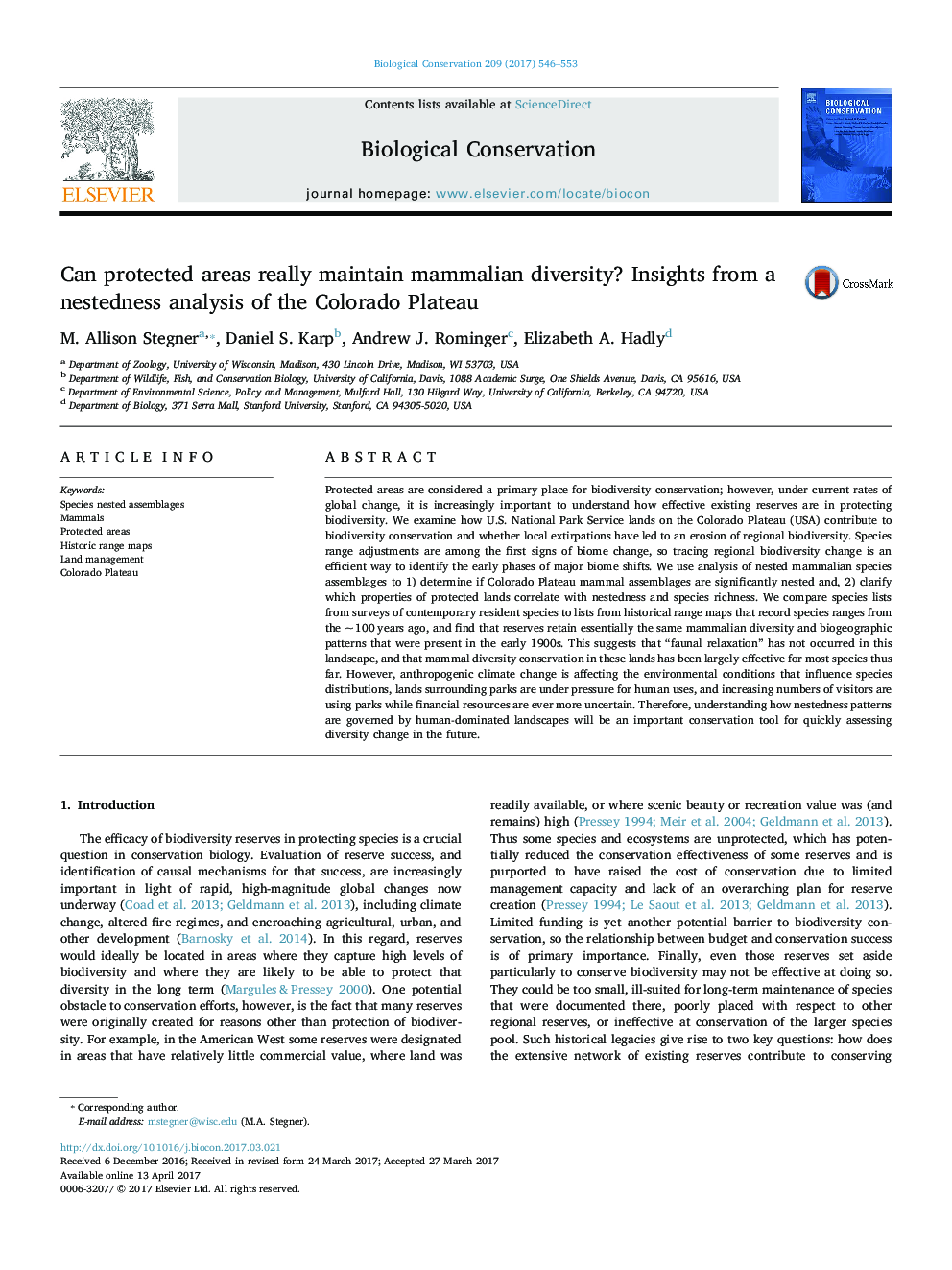| Article ID | Journal | Published Year | Pages | File Type |
|---|---|---|---|---|
| 5743357 | Biological Conservation | 2017 | 8 Pages |
Protected areas are considered a primary place for biodiversity conservation; however, under current rates of global change, it is increasingly important to understand how effective existing reserves are in protecting biodiversity. We examine how U.S. National Park Service lands on the Colorado Plateau (USA) contribute to biodiversity conservation and whether local extirpations have led to an erosion of regional biodiversity. Species range adjustments are among the first signs of biome change, so tracing regional biodiversity change is an efficient way to identify the early phases of major biome shifts. We use analysis of nested mammalian species assemblages to 1) determine if Colorado Plateau mammal assemblages are significantly nested and, 2) clarify which properties of protected lands correlate with nestedness and species richness. We compare species lists from surveys of contemporary resident species to lists from historical range maps that record species ranges from the ~Â 100Â years ago, and find that reserves retain essentially the same mammalian diversity and biogeographic patterns that were present in the early 1900s. This suggests that “faunal relaxation” has not occurred in this landscape, and that mammal diversity conservation in these lands has been largely effective for most species thus far. However, anthropogenic climate change is affecting the environmental conditions that influence species distributions, lands surrounding parks are under pressure for human uses, and increasing numbers of visitors are using parks while financial resources are ever more uncertain. Therefore, understanding how nestedness patterns are governed by human-dominated landscapes will be an important conservation tool for quickly assessing diversity change in the future.
